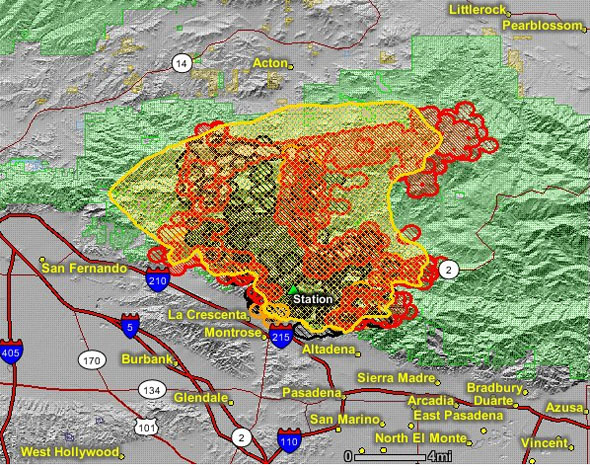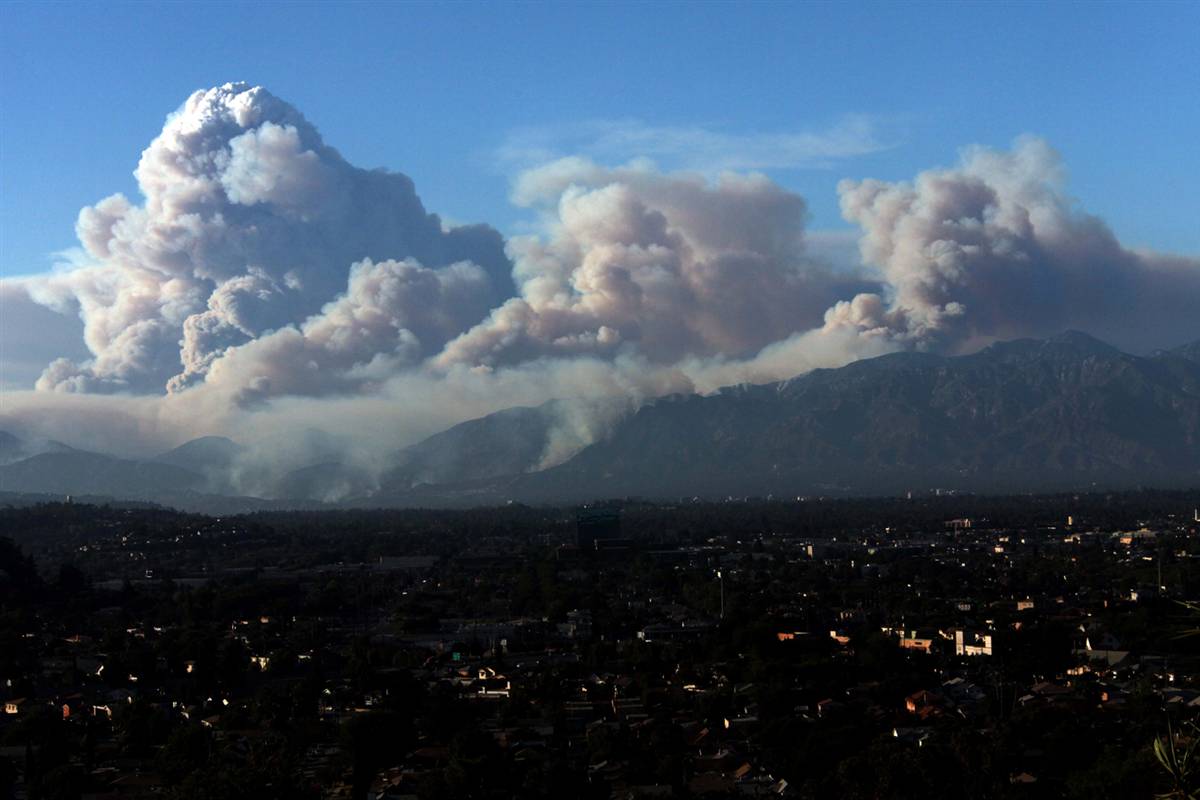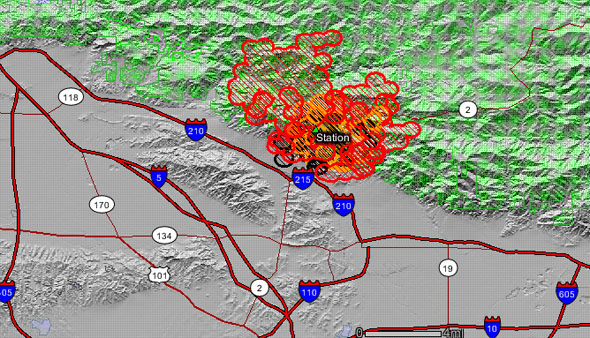The Station fire near Los Angeles doubled in size Sunday night to an estimated 85,760 acres. It is a fatal fire, after two firefighters, Arnaldo Quinones, 35, of Palmdale and Tedmund Hall, 47, of San Bernardino County were killed when they drove off the side of a road south of Acton around 2:30 p.m. on Sunday. The firefighters worked for Los Angeles County Fire Department.

Only about 5% of the fire is contained, a small section of the fire perimeter near Altadena.
More structures were destroyed south of Acton overnight and Monday morning, adding to the 18 homes that burned in Big Tujunga Canyon earlier. The exact numbers will not be known until firefighters can get back into the burned areas to conduct damage assessments.
More residents were forced to evacuate overnight as the fire spread on three sides, making large advances on the west, north, and east sides. It is still about 2-3 miles from Acton on the north, and has come to within 7-8 miles of Littlerock and Pearblossom on Highway 138 on the northeast side.
At least 6,600 homes were under evacuation orders Sunday night. Residents are being told to call 211 to get the latest evacuation information.

While most large fires in southern California are driven by Santa Ana winds, this fire, while occasionally influenced by moderate winds, is primarily driven by steep slopes, heavy vegetation or fuel loading, and extreme weather, including high temperatures and very low humidity.
Wildfire Today explored this concept in an August 26 article. During the last 130 years, through 2007, six of the eight “megafires” larger than 123,000 acres (50,000 ha) were pushed by Santa Ana winds during the first one to four days. The other two megafires were influenced by extreme weather, much like we have seen in southern California since Tuesday, August 25.
There is not going to be much relief from the extreme weather during the next two days. In the valley areas near the fire, temperatures will be in the mid to high 90s with relative humidity in the low teens, which is a little better than the last several days. Winds will be moderate, maxing out at 9-10 mph out of the southwest.






